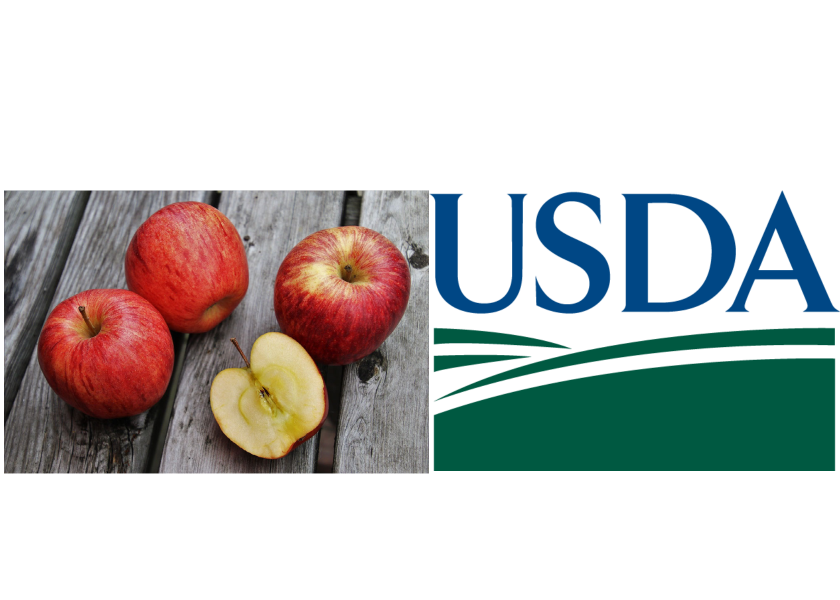Estimates for Argentina apple output revised lower

Compared with earlier estimates, Argentina’s fresh apple production in the 2020-2021 season is expected to decrease 10,000 metric tons to 560,000 metric tons, according to a new report from the U.S. Department of Agriculture’s Foreign Agricultural Service.
Especially for apples, planted area has been on a downward trend, according to the report.
“In recent years, producers have abandoned or repurposed over 40% of orchards,” the report said, with some growers transforming orchards into higher-returning vineyards while other areas are turning to substitutes such as alfalfa and corn.
In Rio Negro and Neuquen Provinces, the USDA said agricultural land is being repurposed into urban development uses. The oil and gas industry has also leased land formerly in fruit production for exploration and extraction purposes, the USDA said.
The report also said that Argentina fresh pear production will rise from 10,000 metric tons to 620,000 metric tons from an earlier USDA estimate.
Tough times
A decade of rising production costs and low profits has “eroded the financial sustainability” of fresh deciduous fruit producers despite currency devaluations that improved the competitiveness of local exports in international markets, according to the report.
The departure of some key international fruit companies, the report said, has increased the sector consolidation.
“The remaining operations are surviving tough conditions through greater cost sharing and marketing outreach but struggle to attract needed investment,” the report said.
For the 2020-21 marketing year season, the USDA said Argentina’s fresh exports are forecast to decrease to 100,000 metric tons for apples and remain unchanged at 320,000 metric tons for pears due to larger fruit supply in the northern-hemisphere countries.
Production
Apple and pear production is concentrated (85%) in Patagonia’s Alto Valley in Rio Negro Province with some production also in Neuquen (12%) Province, the report said.
The remaining 3% is located in the Uco Valley in Mendoza Province.
Grower numbers have fallen from about 9,000 in 2005 to less than 2,000 today. Currently, the sector has 270 packing houses, 260 cold storage facilities and 50,000 direct-hire employees, the report said.
“Production issues continue to threaten the long-term viability of the industry,” the report said. “Many factors, such as the devaluation of the Argentine peso and rising input costs for labor and energy, provide significant challenges to producer profitability.”
Limited access to capital for reinvestment in orchard health and efficiency practices, the report said, further limits potential productivity gains.
In marketing year 2018-19, for example, the report said producers failed to prune between 30% to 40% of apple and pear orchards (estimated cost of pruning is $750 per hectare), and/or treat with basic pest controls during the 2019-20 marketing season.
The production cost for a kilogram of apples or pears was estimated at $0.26 by the “Fruit Contractualization Table” (Mesa de Contractualizacion Fruticola) with 60% of the cost attributable to labor (40% packing and 20% production) and 40% to capital, inputs and service costs (energy, fertilizers, transportation, packaging, customs fees, phytosanitary and quality certifications, etc.)
The 2019-20 marketing year harvest was not interrupted by COVID-19 restrictions, as fruit harvest was declared an excepted activity from the mandatory quarantine, the report said.
Industry sources reported no major delays or COVID-19 related logistical problems at destination ports for the 2019-20 marketing year, and COVID protocols are being met without major disruptions in the 2020-21 season.
Organic production
In the 2019-20 season, about 9.3% of fruit acres planted to apples and pears in the Provinces of Rio Negro and Neuquen were certified organic, the report said.
“The international demand for organic fruit products continued to grow pulled by the effects of the pandemic where consumers looked to healthier food options,” the report said.







